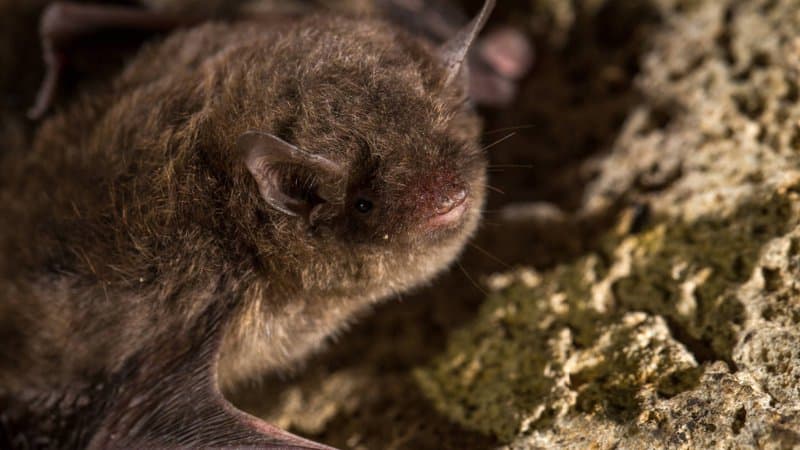Celebrate Bat Week with the AGFC
ON 10-24-2020

Oct. 24, 2020
Randy Zellers
Assistant Chief of Communications
LITTLE ROCK — They may be synonymous with Halloween because of their spooky appearance, but bats play a critical role in the health and economy of Arkansas. Help the Arkansas Game and Fish Commission celebrate Bat Week this week in honor of all the benefits bats bring.
The Witt Stephens Jr. Central Arkansas Nature Center will host a special program about Arkansas bats in an online meeting at 6:30 p.m., Oct. 29. Click here or visit the center’s Facebook Page to learn more.
There are more than 1,400 species of bats that live throughout the world, except areas of extreme drought and extreme cold. Bats play an important role in ridding areas of insects that can harm crops and spread disease. A single bat can eat up to its weight in insects each night, helping farmers protect their hard work. They also play a role in some areas as pollinators, most notably in Mexico, where they are a major pollinator of agave flowers.
Many bats are in decline worldwide – about 24 percent of bats are considered critically endangered, endangered, or vulnerable according to the Arkansas Natural Heritage Commission. Out of the 16 bat species found in Arkansas, there are three federally endangered bats: the Ozark big-eared bat, the Indiana bat and the gray bat. A fourth species, the northern long-eared bat, is federally threatened.
One of the most recent threats to bats is in the form of a fungal disease called White Nose Syndrome. First documented in a New York cave, WNS has killed millions of bats across the United States. Bats become infected with this fungus, which can be seen on their muzzle and other portions of their bodies. The fungus impacts the immune system of the bats during their hibernation period, causing them to burn valuable fat stores during their dormant period. They then face the choice of venturing out in winter when food is not available or withering away in the roost, both of which spell certain doom.
WNS was first found in Arkansas in 2012 and is now present in at least 15 counties in the state. Several species, such as the Little Brown Bat and Tricolored Bat have seen their populations decline in the state by 90 percent or more. There is no known cure, but scientists around the world are studying how the disease spreads and what can be done to control it. Many caves in Arkansas are closed to entry because the fungus can be transmitted from one cave to another through the clothing and equipment people use when caving.
Visit www.batweek.org to learn more about how bats are a part of our daily lives and get all sorts of ideas for some activities that will help with bat conservation and awareness.
Recent News

Arkansas Wildlife Weekly Fishing Report
Jul. 10, 2025

Lonoke aquaculturist named to AGFC
Jul. 10, 2025
Subscribe to Our Weekly Newsletter E-mails
Don’t miss another issue. Sign up now to receive the AGFC Wildlife Weekly Newsletter in your mailbox every Wednesday afternoon (Waterfowl Reports are published weekly during waterfowl season and periodically outside the season). Fishing Reports arrive on Thursdays. Fill in the following fields and hit submit. Thanks, and welcome!
